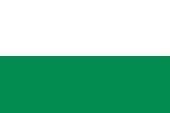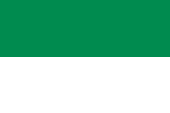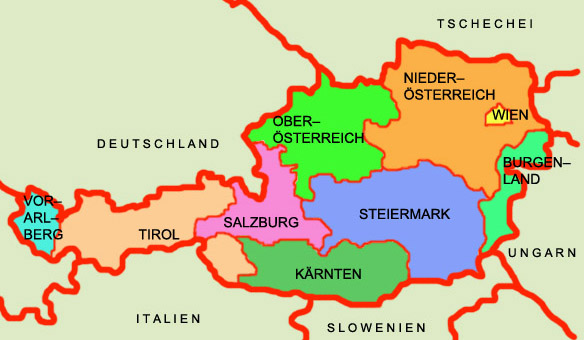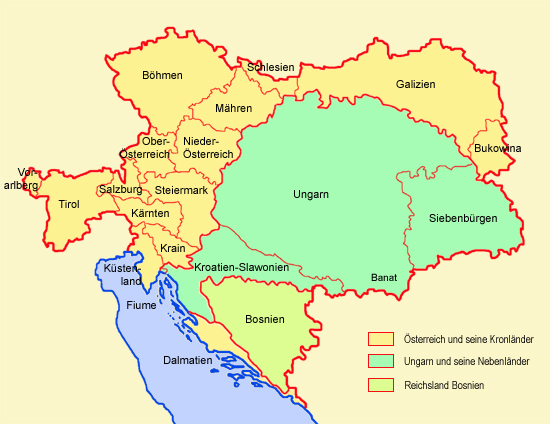mobile View, to the German Version tap the flag


- Styria (Steiermark)
- Slovanian: Stajerska
- Federal Country of the Republic of Austria
- former Austrian crown land: Duchy of Styria
• Flags
• historical Flag
• Meaning/Origin of the Flag
• Coat of Arms
• Meaning/Origin of the Coat of Arms
• Map of the federal countries of Austria
• Map of the former crown lands of Austria-Hungary (to 1918)
• Numbers and Facts
• History
• Origin of the Country's Name

Flag of the country (Colours of the country),
ratio = 2:3,
Source, by: Wikipedia (D),
Colour, by: Dr. Peter Diem www.peter-diem.at




Official flag,
ratio = 2:3,
Source, by: Wikipedia (D),
Colour, by: Dr. Peter Diem www.peter-diem.at








19th cent. to 1960,
Flag of the country (Colours of the country),
ratio = 2:3,
Source, by: Flaggen Enzyklopädie





The flag of Styria shows two stripes in white and green and was in 1960 adoped with this sequence of the colours. The colours of the flag are derived from the colours of the coat of arms (silvery panther in green). From the 19th century until 1960 this flag was in use with inverted sequence of the colours.
In the time of the monarchy, the country had – like all the other crown lands of the Austrian crown – its own colours (Landesfarben), which were used amongst others on horizontally two- or three-striped flags. The colours (Landesfarben) were very often taken from the respective coat of arms of the country or were supplemented by another colour, which not appears in the coat of arms, or they went back to older models of the coat of arms (e.g. Carniola). Officially, the colours had never been regulated or stipulated, so that their sequence varied in practice or even the colors deviated. The Austrian heraldist Hugo Gerard Ströhl (1851–1919) was probably the first to take care of it and asked for the colors (Landesfarben) on the flags at the respective state authorities around 1890 and compiled them. For Styria, green and white were ascertained as the country's colors of the crown land.
Austria joined the German Empire in 1938 as one country. The federal structures played no role, they were completely replaced by the NSDAP districts (NS-Gau), the countries were abolished. From now on, offices and authorities had to use the empire's official flag. The corresponding national colors may still have exist, but not in the form of flags. They may have been used sporadically on SA uniforms or in some ranks of the Hitler Youth in the chest cord.
The flags of the Federal States of Austria are used with or without the coat of arms. For official use, however, they always show it. The general population is permitted to use this format as well.
There do not seem to be any legal regulations for the colours of the flags of the Austrian federal states; since they are apparently not defined, they are reproduced in practice within a usual standard range. However, the Austrian publicist and media scientist Dr. Peter Diem gives recommendations for the reproduction of the colours: For Styria, a bright green, most likely corresponding to Pantone 348.
Source: Dr. Peter Diem austria-forum.org,
Wikipedia (D),
Flaggen Enzyklopädie,
Volker Preuß,
Österreichisch-Ungarische Wappenrolle


since 1926,
Coat of arms of Styria,
Source, by: Wikipedia (D)

ca.1890–1918,
Coat of arms of the Duchy of Styria,
Source, by: Ströhl, Wappenrolle Österreich-Ungarns, 1890, via Wikipedia (D)

The green coat of arms of Styria with the silver panther dates from the 13th century. It goes back to the house of Sponheim, which became dukes of Styria in 1122. The crown on the coat of arms was a common princely hat at the time of the monarchy. In 1926 it was replaced by the historical ducal hat of Styria. The Austrian heraldist Hugo Gerard Ströhl surrounded the coat of arms ca. 1890, in its last known version, with for the country typical flora. For the Duchy of Styria this has been Edelweiss, to emphasize the importance of the country as a mountain region.
Source: Wikipedia (D),
Flaggen Enzyklopädie, Sponheim,
Österreichisch-Ungarische Wappenrolle

The federal countries of Austria:

Source: Volker Preuß
• Burgenland
• Carinthia (Kärnten)
• Lower Austria (Niederösterreich)
• Upper Austria (Oberösterreich)
• Salzburg
• Styria (Steiermark)
• Tyrol (Tirol)
• Vorarlberg
• Vienna (Wien)

Map ca. 1910:

Source: Volker Preuß

Area: 6.332 square miles
Inhabitants: 1.243.000 (2019)
Density of Population: 196 inh./sq.mi.
Capital: Graz (former name: Bayrisch-Grätz), 288.800 inh. (2019)
official Language: German
Currency: 1 Euro = 100 Cent
Time Zone: MEZ
Source: Wikipedia (D)

400 B.C. · settlement by Celts
15 B.C.–46 A.D. · beginning Roman conquest, establishment of the Province of Noricum
4./5. cent. · invasion of the Goth
409–452 · invasions of the Huns
476 · dismissal of the last Roman emperor Romulus Augustulus, end of the (West)Roman Empires, settlement by Bayuvares
6th cent. · settlement by Slavs, especially by the Slavic tribe of the Carantanes
ca. 740 · Duke Odilo of Bavaria supports the Carantanes against the Awares
ca. 750 · Duke Tassilo III. of Bavaria conquers the today’s Carinthia and Styria
788 · Bavaria becomes subjected by the Frankish Empire of the Carolingians
803 · establishment of the "Carantanian Mark"
907 · invasions of the Hungarians
976 · establishment of the Duchy of Carinthia, at the same time affiliation of the borderlands (Mark) of Istria and Carniola, and the "Borderland of Middle Mur River", the "Borderland of Drau River" and the "Borderland of Sann River"
1077 · the House of Eppenstein gets the title of Duke of Carinthia
1122 · the House of Sponheim gets the title of Duke of Carinthia
1180 · Styria becomes separated from Carinthia and Bavaria and levied to a duchy under the House of Traungau (Traungauer)
1192 · vanish of the House of Traungau, Styria comes as a inheritance to the House Babenberg of Austria
1246 · vanish of the Babenbergs, Austria and Styria come to the Bohemian Premyslides
1273 · Rudolf of Habsburg becomes German King
1278 · Rudolf of Habsburg beats the Bohemian Premyslides and acquires Austria and Styria
13th/14th cent. · settlement by Germans
15th cent. · invasions of the Turks
1797–1809 · French Revolutionar Wars, Styria is occupied by the French in 1797
1848/1849 · revolution, new constitution: the titular hereditary territories of the Habsburgs in the Austrian Empire become converted to crown lands with their own Landtag (parliament), the Duchy of Styria becomes in this way a crown land of the Austrian Empire
1914–1918 · First World War
12th of November 1918 · proclamation of German Austria to the Republic of Austria, Styria becomes an Austrian federal country
10th of September 1919 · Peace Treaty of Saint-Germain, Southern Styria becomes annexed by the Kingdom of the Serbs, Croats and Slovenes (Yugoslavia)
13th of March 1938 · annexation of Austria to the German Empire, the administrative "NS-Gau of Styria" takes the place of the Country of Styria
27th of April 1945 · proclamation of the Republic of Austria "Second Republic", Styria becomes again an Austrian federal country, but stays occupied by British troops until 1955
1955 · withdrawal of the occupation troops
Source: Atlas zur Geschichte,
Wikipedia (D),
World Statesmen,
RetroBib Retrobibliothek,
Discovery '97,
Volker Preuß

The name of the Country of "Styria" has its roots in House of the Ottokars which were since 1050 Margraves over the die "Borderland (Mark) of Middle Mur River", the "Borderland of Drau River" and over the "Borderland of Sann River", and in 1188 (shortly bevore their vanish) they even yet became dukes. The birthplace of the Ottokars was in Steyr. The Name of the birthplace of the Counts has transfered to their whole properties.
Source: Wikipedia (D)

Further Austria pages (historical flags and coats of arms):
• Empire of the Austrian Habsburgs (to 1804)
• Empire of Austria (1814–1867)
• Austria-Hungary (1867–1918)
• Republic of Austria (since 1918)

![]()















